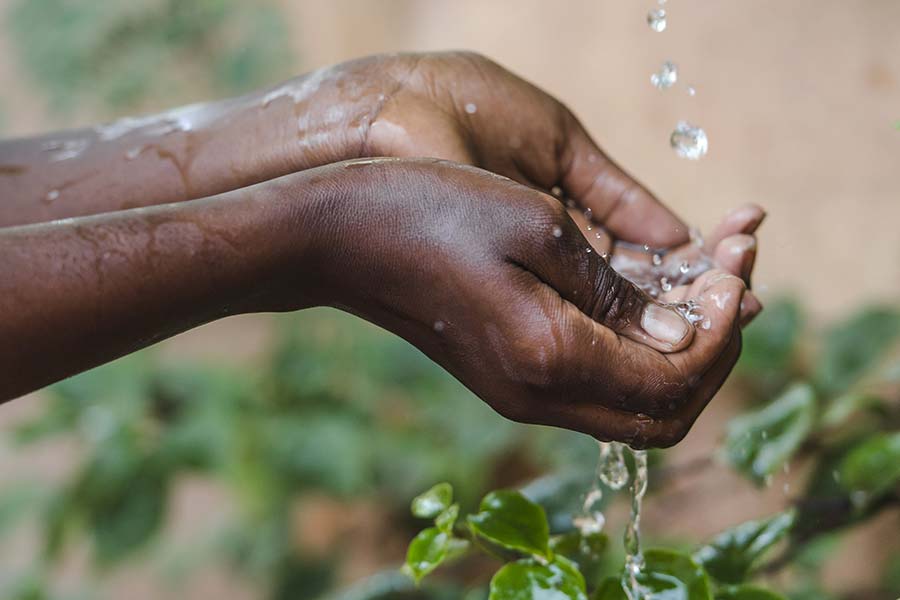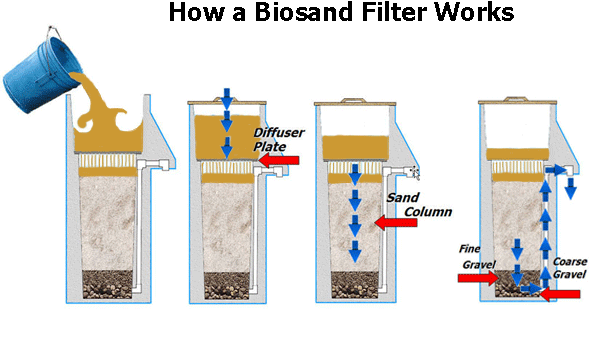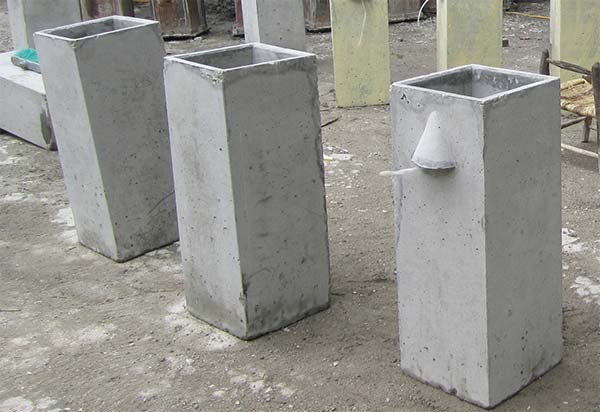The Need For Clean Water
The water that comes out of the taps in our homes goes through a few steps of preparation before it is consumed, or used for washing dishes, food, and even ourselves.
Why? Because fresh water contains pathogens (viruses, parasites, and bacteria), toxins (such as arsenic and mercury), or just any suspended particulates that discolor or cloud the water (also known as turbidity).
In the West, most cities and towns have municipal water treatment plants that clean up the water to make it safe for usage and consumption. This is something we take for granted and don’t have to worry about: it is extremely rare for those systems to fail, thus putting us at risk at being sick, or even dying.
For several areas in Africa, such systems do not exist. People living in these poorer regions of the world are at risk from consuming unclean fresh water, yet they cook with it, wash their clothes with it, and when thirsty drink it.
To build and operate water treatment plants in the Third World would be too expensive a solution. The materials required to assemble them are scarce as well. What is required is a low-cost water purification solution that uses materials that are plentiful and easy to find.
Enter the biosand filter, or BSF.
What are BSFs?
BSFs are the modern-day version of the slow sand filter systems, which were first introduced in 1804 by a bleachery owner named John Gibb in Paisley, Scotland. Gibb invented a water filter made of of sand and charcoal that could strain pollution from the River Cart.
The function of the BSF is to help extract pathogens and toxins from freshwater. It also removes foul odours and makes the water clear in appearance. BSFs use a series of physical and biological processes that clump, trap, and strain foreign material out of the water.
BSFs are made of commonly available parts that are easy to assemble, resulting in a filtration system that is easy to operate.
How Do BSFs work?
BSFs consist of a physical housing that take in the dirty water, a sieve or diffuser is located at the top. The sand filters and extracts unwanted pathogens and toxins. Through the use of gravity the clean water enters into a container. The housing can be made of any material that does not rust or would accidentally contaminate the filtration process, such as plastic or concrete. Concrete is the most commonly used material for reasons of durability and the weight of which makes the BSF difficult to steal.
A lid secures the opening at the top of the BSF to prevent any germs, insects, or small animals from contaminating the filter process.
Water first passes through a diffuser. The diffuser evenly distributes the water over the biofilm and filtration sand, both of which work together in the water filtration process (this is why it’s called a “biosand filter”). This is necessary so both the sand and the biofilm are not disturbed, which would affect the ability of the BSF to filter the water.
What is biofilm? Well, the best example would be the film that forms over your teeth that could lead to cavities and gingivitis if you do not brush. It’s a suspension consisting of micro-organisms floating in a shallow layer of water over the filtration sand and takes a few weeks to form naturally. The “helpful” organisms in the biofilm compete for oxygen and food with the “harmful” organisms in the water, resulting in the death of the latter due to predation and starvation.
The next layer is the filtration sand, which strains the remaining pathogens and suspended particulate and any undissolved toxins from the water. The filtration sand is fine in texture and specifically selected to perform the filtration process.
The separation gravel supports the filtration sand but does not do any actual filtration. Its purpose is to prevent any filtration sand from leaving the BSF. The water moves through this layer much more slowly than the filtration sand layer.
The drainage gravel at the bottom of the unit is the final layer the water passes through. It supports the separation gravel, while preventing the separation gravel from exiting the BSF.
The design of the BSF allows the water to flow down through the aforementioned filtration layers, and later rising upwards in a channel to exit through an outlet spout. The now clean filtered water is captured in a water container designed to prevent recontamination and later used for cooking, drinking, washing, and bathing.
The Benefits Of BSFs
BSFs are commonly used in developing countries in the South American, Asian, and African continents, and can be found in operation at the community level in households and schools. BSFs can be used alone, or as part of an existing decontamination process in either a pre- or post-process support role.
BSFs ensure the production of clean water that can be used for drinking, food preparation, personal hygiene and sanitation.
According to the Centre For Affordable Water and Sanitation Technology (CAWST), BSFs remove over 95% of bacteria and between 80 and 90% of viruses if the filter is properly installed and used. Any microorganisms that manage to escape the BSF will be insufficient enough in number to make a healthy adult sick.
BSFs have been proven to reduce the amount of waterborne disease. Studies conducted by the University of North Carolina and the University of Nevada in the Dominican Republic and Cambodia reported a drop of diarrheal diseases by 47% in all age groups.
While there are few reports available that report the effectiveness of BSFs in the removal of heavy metals in freshwater, a study conducted in South Africa revealed BSFs removed 64% of iron.
BSFs have a high rate of clean water production (30 litres or more per hour).
Because the materials needed to build a BSF are commonly available and very affordable, nearly any family can own one regardless of income level. They require very little time to understand how to operate.
BSFs offer a business opportunity for those who wish to earn an income supplying assembled BSF units, or the materials required to assemble them. A household version of the BSF was proposed by David Manz in the 1990s at the University of Calgary, Canada.


